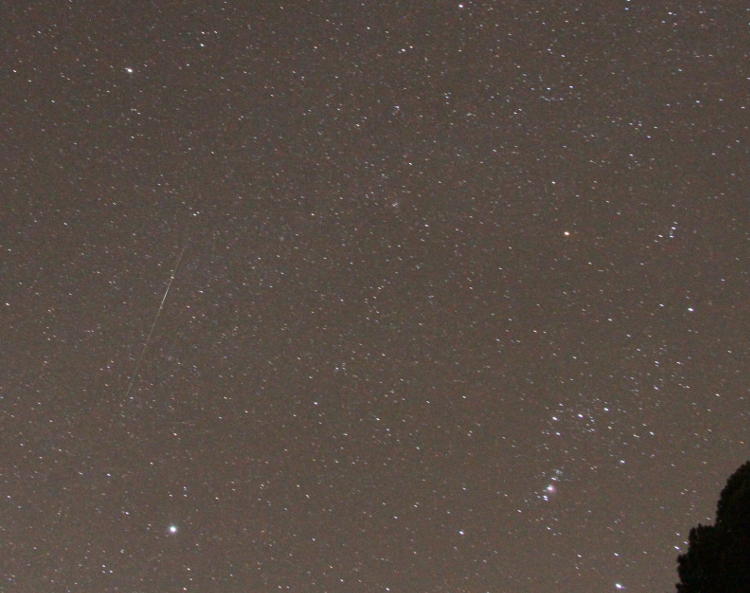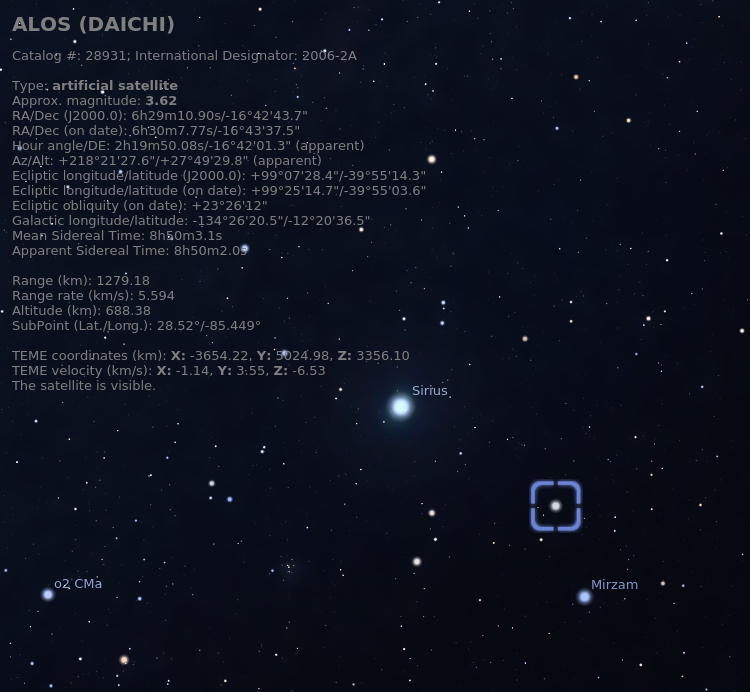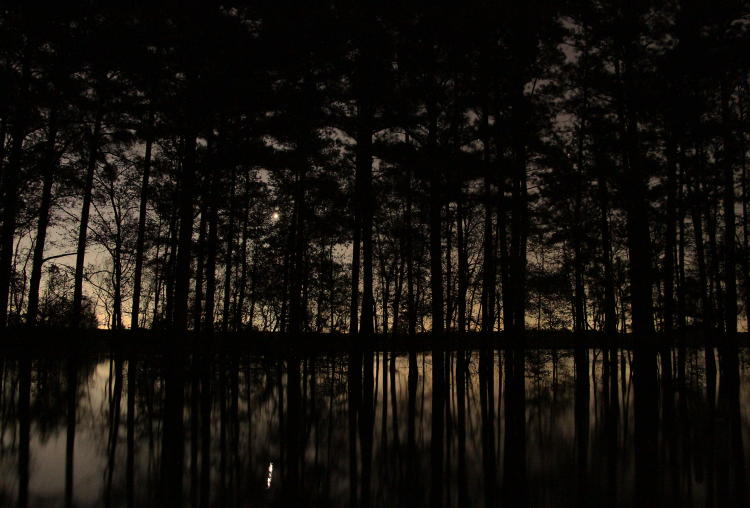In the previous post, I mentioned attempting in vain to capture any of the Leonid meteors nine years ago, ending with, “Leave it to me to chase meteors on the colder nights…” And since it was 4°C at 4 AM this morning, guess what I decided to attempt again?
The primary difference being, this time I was moderately successful!
But first off, the false alarm.

I saw a small handful of meteors this morning, mostly where the camera wasn’t aimed, but noticed one that might have made it into the frame. As I closed the shutter, I took a quick chimp at the LCD preview and saw this lovely stripe across the photo, notably not where I’d seen the meteor, yet pleased that I at least caught this one, if not two. Except, on returning home and examining the images that I’d captured, I realized that this and the following frame had matching lines across them, meaning I hadn’t captured a meteor (which will typically last less than a second and will never exist across multiple frames,) but a satellite instead. In this case, it was the Cosmos 2058, a Russian spy satellite – Stellarium will allow you to determine a lot of these, so if you haven’t downloaded it yet, why the hell not?
But I said I was successful, and I was. Not hugely, but this is a bona fide meteor.

That’s Sirius at lower left, with Orion showing at lower right, just to help orient you. I never saw this one, but during exposures I may often be looking around at other portions of the sky, seeing if any areas appear more active. I was experimenting with high ISOs on the 7D to shorten the exposure times and thus the star trails, but this means a) a hell of a lot more noise and blotchiness from the sky, and b) a lot more frames to maximize the chance of capturing a meteor. Nonetheless we have a classic meteor, showing the ‘tapered’ appearance that indicates that it flared to a peak brightness and faded – twice, it seems.
And then again, while the camera was still aimed in the same direction (which was the darkest sky direction in this region, the farthest from any cities that throw up too much light pollution.)

This one was almost nicely aligned with the previous, except these weren’t consecutive frames, so I’m confident that I captured two meteors here. According to science boffins, most meteors are about the size of a grain of sand, and most of the light they produce isn’t the meteor itself melting as it hits the atmosphere, but instead the air reacting to the velocity of the particle. Still, there are occasional color changes from meteors of different types, though I have yet to see one myself, much less capture one in camera.
By the way, the regularly-scheduled meteor storms are all the result of Earth passing through the stream of debris left behind by the passage of comets; in the case of the Leonids, it’s comet 55P/Tempel-Tuttle. They get their name from the apparent point of origin for most of the meteors, which is the ‘leading edge’ of the Earth as it enters the debris cloud, so the larger percentage of meteors seems to emanate from that portion of sky (radiant.) Thus the Leonids indicate that the radiant is the constellation Leo. However, they can appear in all directions, pulled by Earth’s gravity or simply catching the atmosphere as the planet passes alongside, and I’ve seen them traveling all over the place during busy storms, including almost directly into the radiant, so concentrating on just one portion of the sky might mean missing some cool ones.
I caught one satellite actually crossing the sky, trundling along with barely visible progress, and re-aimed the camera for a specific exposure. In a couple other cases, what I took to be meteors when examining the photos back home turned out to have paths in consecutive frames. The one below almost fooled me, because it shows a flare, but it took too long to cross the sky.

See that brighter middle? Yeah, that should indicate a meteor, but it doesn’t. Instead, this is likely the satellite rotating and catching an angle to reflect the sun, given some weight when I used Stellarium to plot the satellite itself.

It’s pretty easy: open Stellarium, and use the progress arrows to reverse the Earth’s rotational effect until the clock approaches the time stamp of the photo (provided that you remembered to reset the camera’s clock for DST, which I’d forgotten.) Watch for a ‘star’ moving too fast or in the wrong direction, and click on it to see what it is. ALOS stands for Advanced Land Observation Satellite, and as you can see from the photo at that link, it’s covered in reflective foil; easy enough to catch the sun as the sunrise approached.
Through the small patch of trees to the east (this being a boat launch area on Jordan Lake,) I could see an inordinatley bright spot, and since the airport lies in that direction I suspected a plane, but it had no strobes and wasn’t apparently moving. After a minute, I’d confirmed it was Venus rising, and a bit later I re-aimed the camera and did a time exposure through the trees, flooded with the rains from a recent tropical storm.

The sky was already lightening with the coming dawn, and I was starting to lose sight of some of the stars overhead, so after a few more frames I packed it up. Maybe I’ll return again tonight to give it another go, but for now, I can bask ever-so-slightly in the success of finally capturing a few (admittedly unimpressive) meteors.




















































